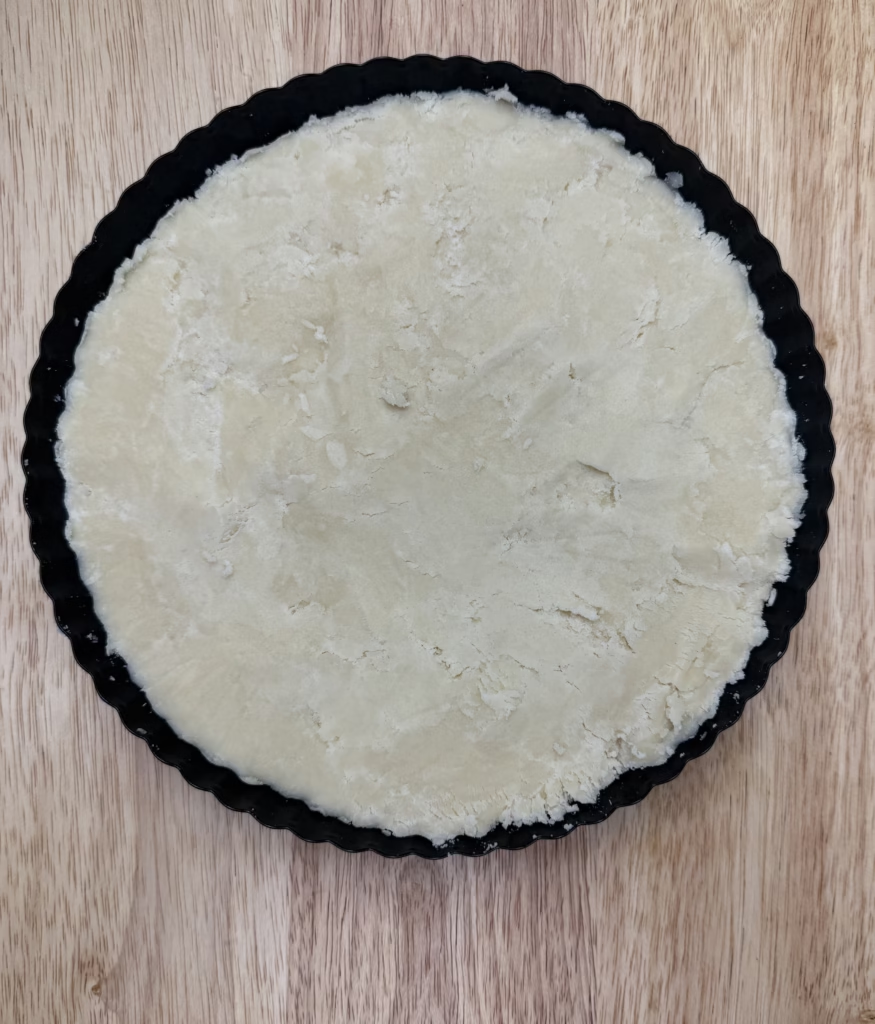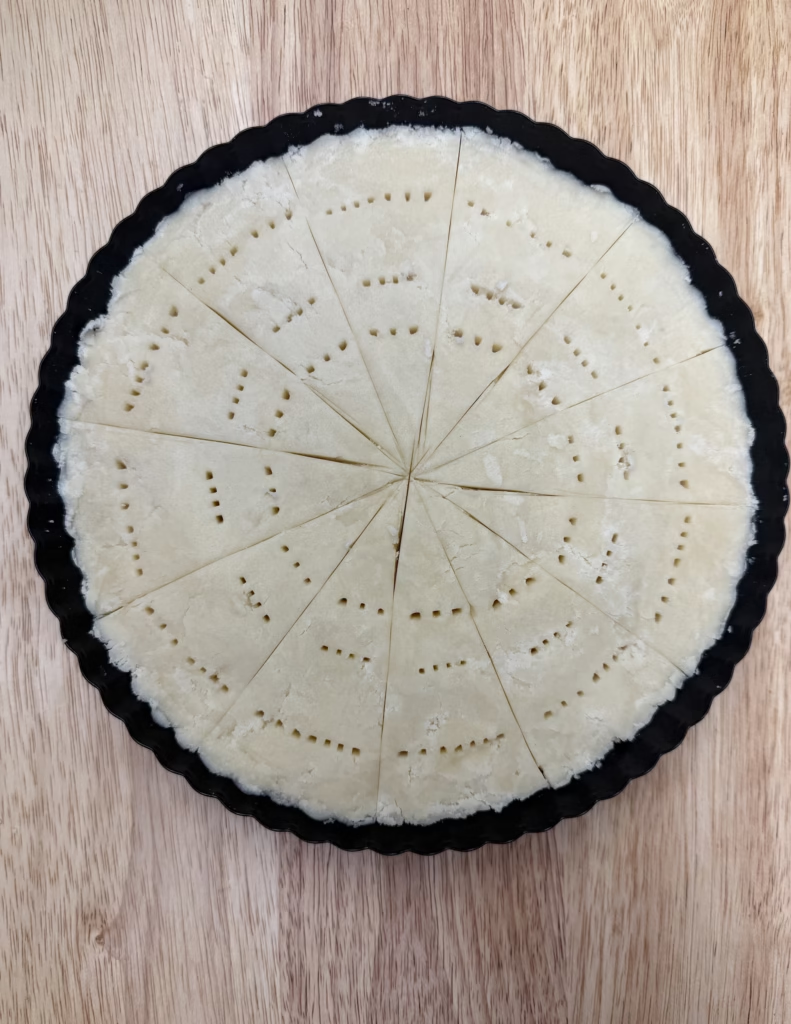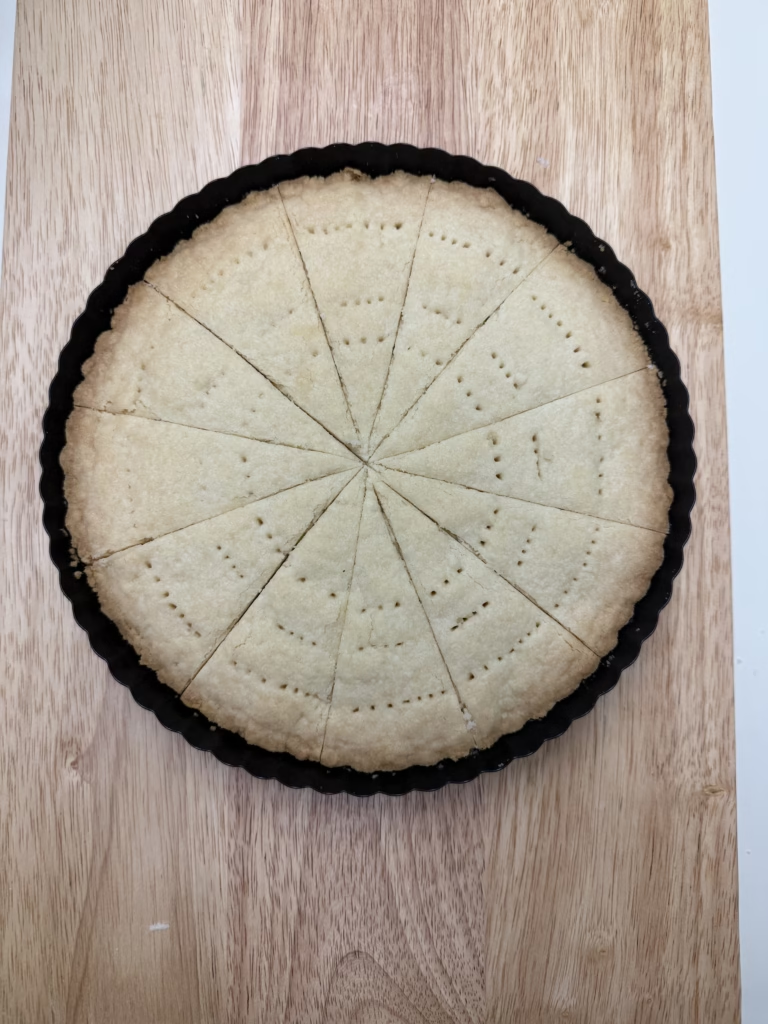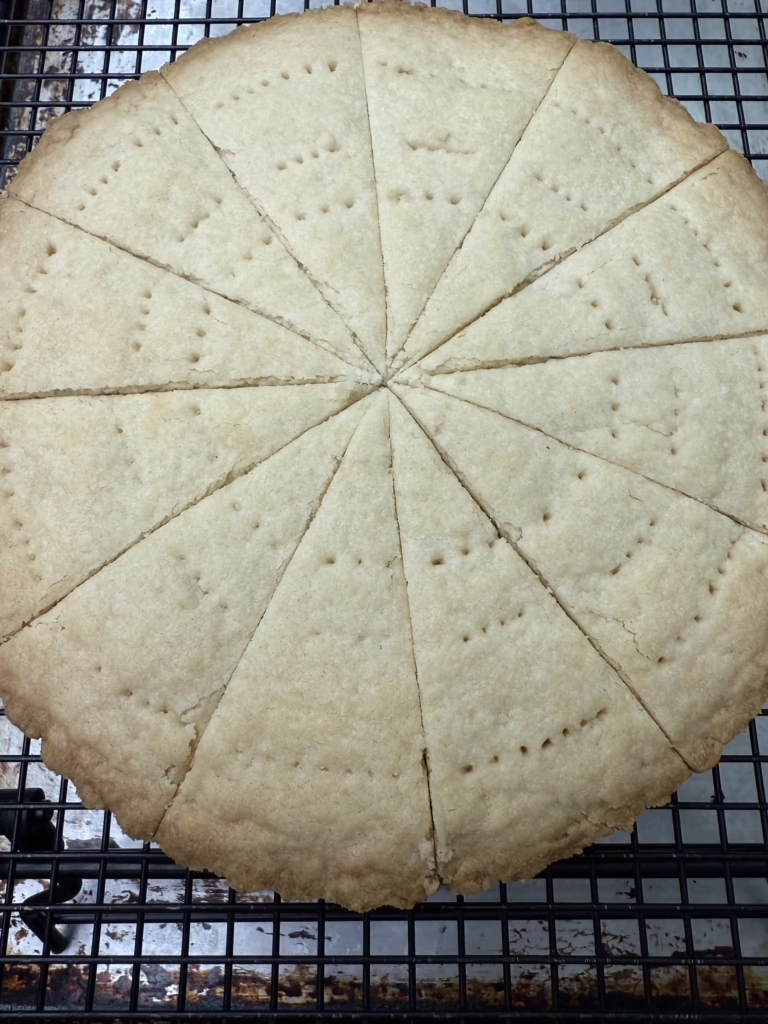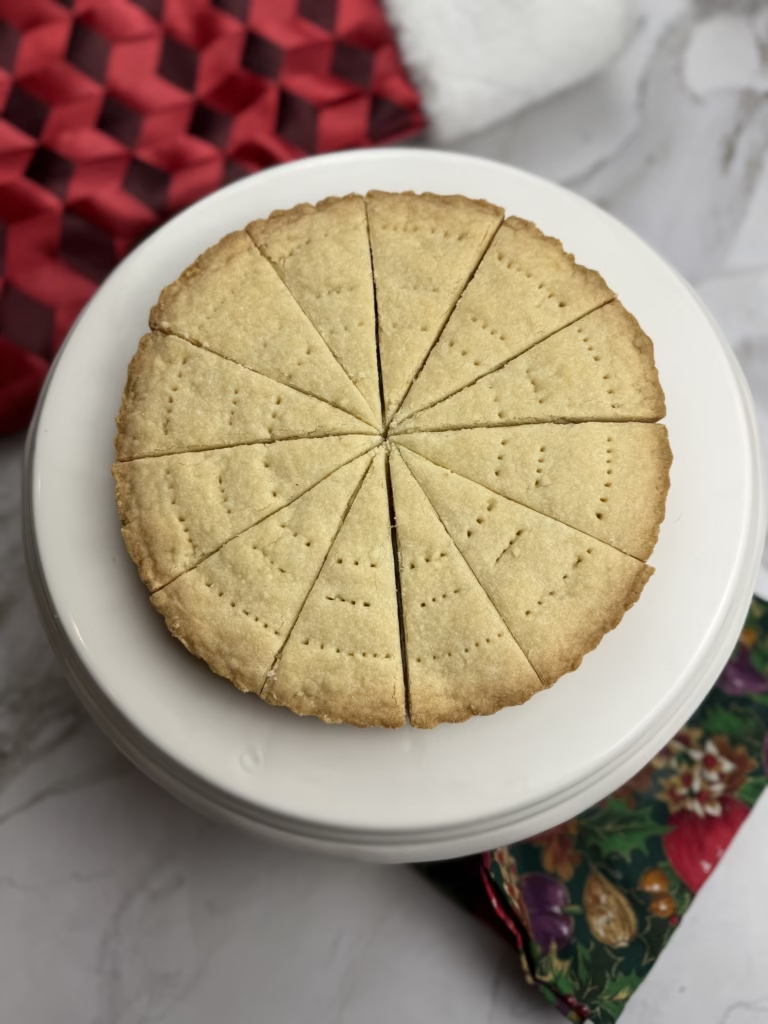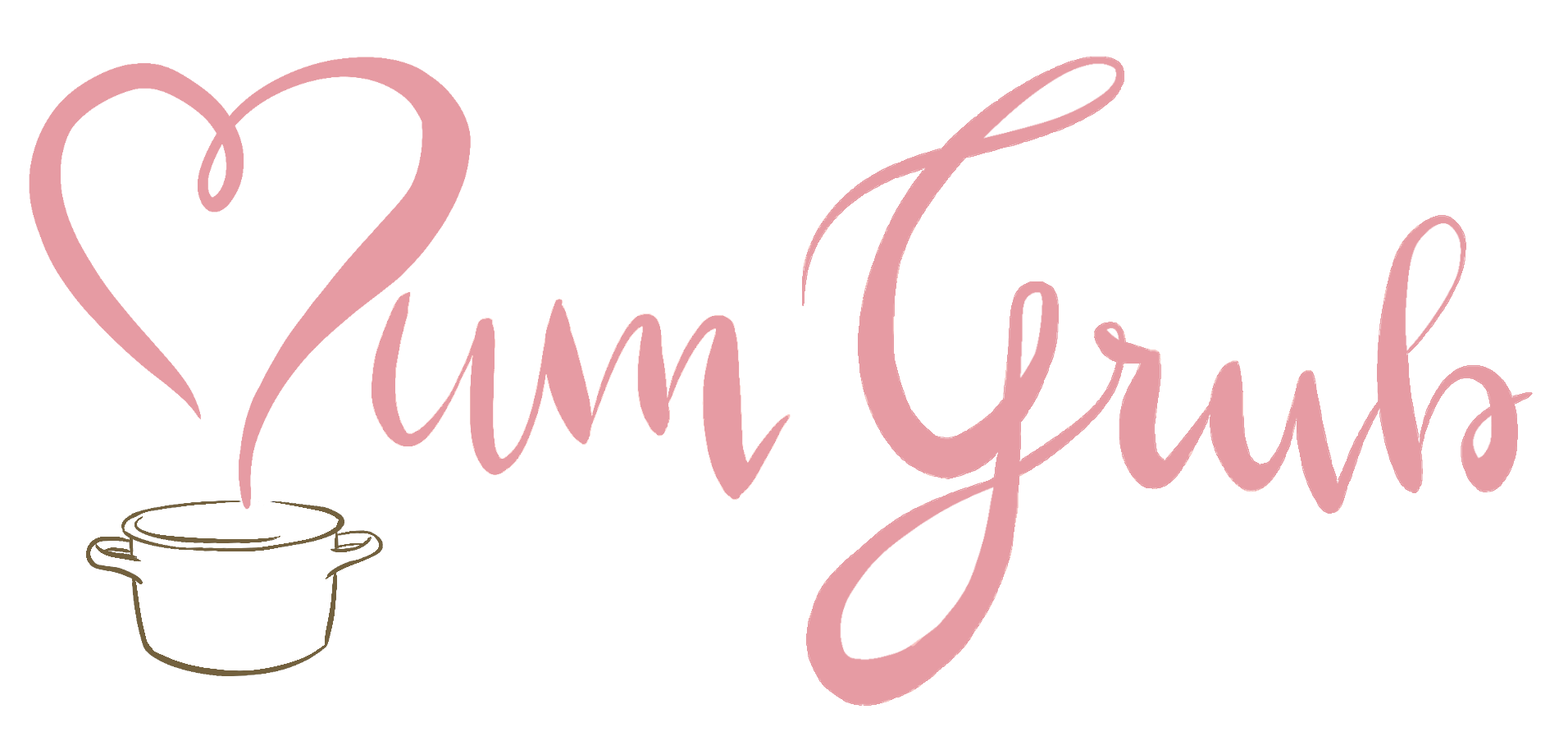Scottish Shortbread

Scottish Shortbread is the traditional shortbread that most of us think of when we think of shortbread. The ones we can buy in the pretty tartan boxes or tins. Buttery and flaky biscuits (cookies outside of the UK) that are so delicious. These Scottish Shortbread Petticoat Tails are the same biscuit but they are made in a traditional round then cut into wedges and decorated with a simple pattern.
This simple and traditional recipe calls for only 3 ingredients (4 if you add salt, which is optional). Butter, Flour and sugar are the basics. It was traditionally baked in one large round baking pan and then cut into wedges or “petticoat tails” and this is the recipe I have done now. It can be rolled out thinner and cut into individual cookies as well, but I feel it loses some of the tradition of shortbread when that is done. When I want a shortbread cookies, then I make my whipped shortbread which is delicious, but not traditional.
I remember as a child we always had Scottish Shortbread in the house around Christmas. My Mum would make a batch and when I or my sisters were old enough one of us would make a batch. Sometimes we would buy or recieve it in the pretty tartan tins that I mentioned earlier. For a store bought shortbread they are usually pretty tasty I must say.
It might take you a couple of trys to get the petticoat tails perfect, but trust me they are worth the effort. Don’t be tempted to underbake the “cake” it needs to bake at a lower temperature for a longer time than you would normally think…don’t be tempted to take it out early or it will likely be under baked. The one I made today could have stood for another 2-3 minutes baking, but I was impatient! I didn’t want the edges to get too browned but I think it could have handled just a bit more. Set your timer for 10 minutes less then just keep an eye on it.
Why is it called Shortbread?:
Short is its most basic meaning when talking baking just simply means crumbly. This is a result of the significant amount of butter that is used. Think shortcrust pastry….also a lot of butter/fat used.
Originally shortbread was called “biscuit bread” because it was made with leftover dried out bread dough. Over time it changed to an unleavened biscuit (no yeast) made with lots of butter! It was found all over the British Isles but it was Mary Queen of Scots who popularized the shortbread we now know and love.
The petticoat tails as I have done in this recipe are meant to resemble an actual petticoat. Traditional Scottish shortbread cookies can also be cut into “rounds” (made into a log and sliced) or into “fingers” which are similar to the petticoat tails in that they are baked in one larger pan then cut into smaller rectangle “fingers” after baking.
If you go to Scotland you will see Scottish Shortbread in the shops any and every time of the year. We generally think of it as a Christmas cookie, but in this day and age, you can have it anytime you want, whether homemade or store bought. Just don’t tell your doctor! There’s a lot of butter in these little jems!
What kind of baking tin do I need for Scottish Shortbread Petticoat Tails?
If you want to make the traditional petticoat tails then you need to use either a loose bottomed tart pan or a springform pan (8-9″ maximum size). If you use larger than 9″ your shortbread will be thin and not traditional. I use a 9″ fluted tart tin with a loose bottom. That way I get a nice pretty edge and decent thickness with the added benefit of being able to remove it from the tin quite easily.
What do I need for Petticoat tails Scottish Shortbread?
This traditional recipe uses only 3 ingredients. You can add salt for a 4th ingredient but it is totally up to you. The ratio of ingredients in traditional Scottish shortbread is 3:2:1, as I have done here. If you don’t have access to caster sugar, you can take regular granulated sugar and put it through a food processor or coffee mill to make it fine.
- 300g All purpose flour
- 200g Butter
- 100g Caster Sugar. * do not use regular granulated sugar

Scottish Shortbread Petticoat Tails
Equipment
- 1 8 or 9" round tart pan with loose bottom * or a 9×9" square baking pan if making fingers
- Hand mixer
Ingredients
- 300 grams All purpose flour 2 cups
- 200 grams Butter, softened and good quality (up to 225g if needed) 1 cup
- 100 grams Caster Sugar (superfine sugar) ½ cup
- pinch Salt (optional)
Instructions
- In a medium bowl, mix butter until it is creamed but not fluffy
- Add the sugar and salt (if using) and mix until combined
- Slowly add the flour and mix until clumps begin to form then switch to your hands and gently fold and push the mixture into a ball. Do not overwork the dough. If it is too dry and crumbly add a little of the extra 25 g of butter 1 Tbsp at a time and see if that helps.
- Move the ball of dough over to the tart pan (or baking pan) and press it in with your fingers, then switch to a spoon (using the back) and smooth it out into an even layer. If you have a fluted pan, use the spoon to push the dough into the flutes for a pretty edge. If you have non fluted pan, make a pretty design in the edge like you would a pie crust (use a fork). Cut into 12 even wedges.
- Using a fork or toothpick, create a design (pattern) into the shortbread.
- Chill for 30 minutes or up to one hour (preferred)
- Bake at 325℉ (160C) on convection for 40 (and up to 60) minutes depending on your tin size. The shortbread should be slightly golden browned when done.
- Once you feel the shortbread is cooked through and brown especially along the edge, remove from the oven and while it is hot, run a sharp knife along the previous cuts. Set the tart pan on a bowl so you can release the outer rim of the pan. Then let it cool completely before removing the bottom.
- If needed you can re poke the pattern/design carefully. But it is usually not necessary.
